Driving Glickenhaus’ Le Mans Hypercar Fries Your Brain
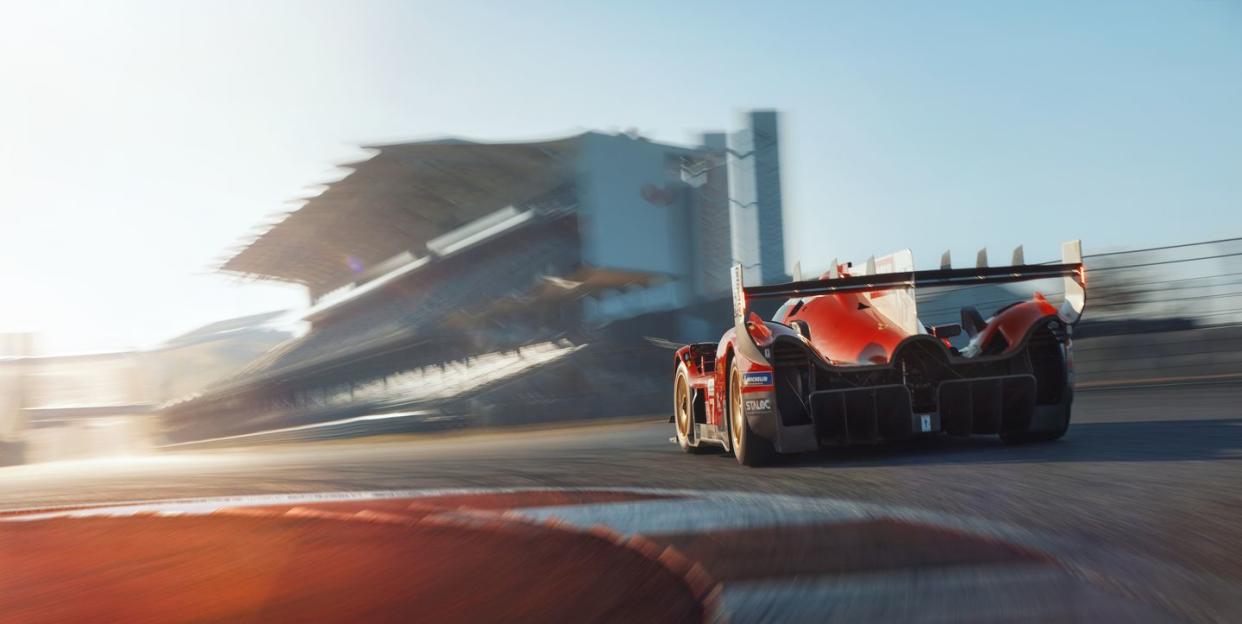
- Oops!Something went wrong.Please try again later.
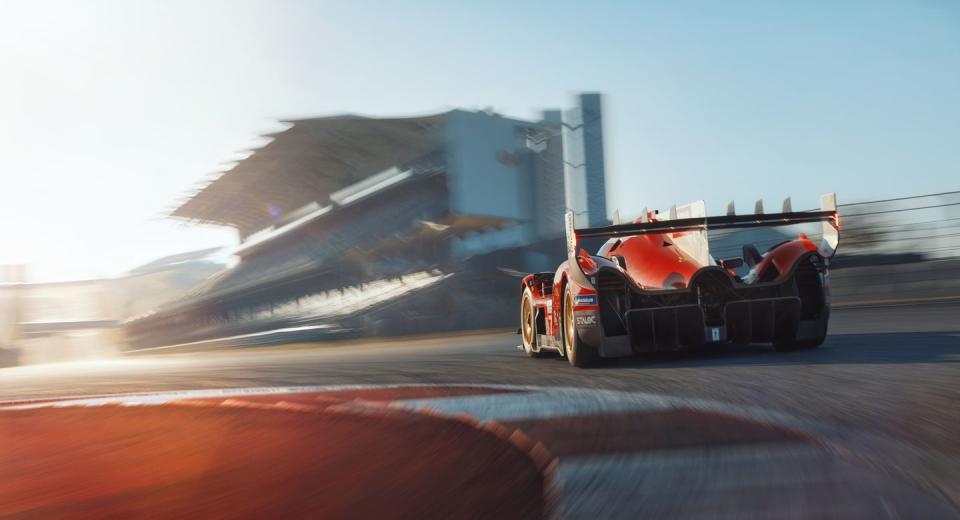
Things like this don’t happen.
This is Glickenhaus 007 LMH #709, the car that finished third overall at the 2022 24 Hours of Le Mans. Not third out of three, and not at some off-brand enduro run in a Nebraska parking lot. This car is royalty.
This story originally appeared in Volume 16 of Road & Track.
For reasons I still can’t comprehend, the Glickenhaus team and HK Motorcars (this 007's owner and Glickenhaus’s dealer partner) are tossing me the metaphorical key just months before the car returns to Le Mans to take on the world.
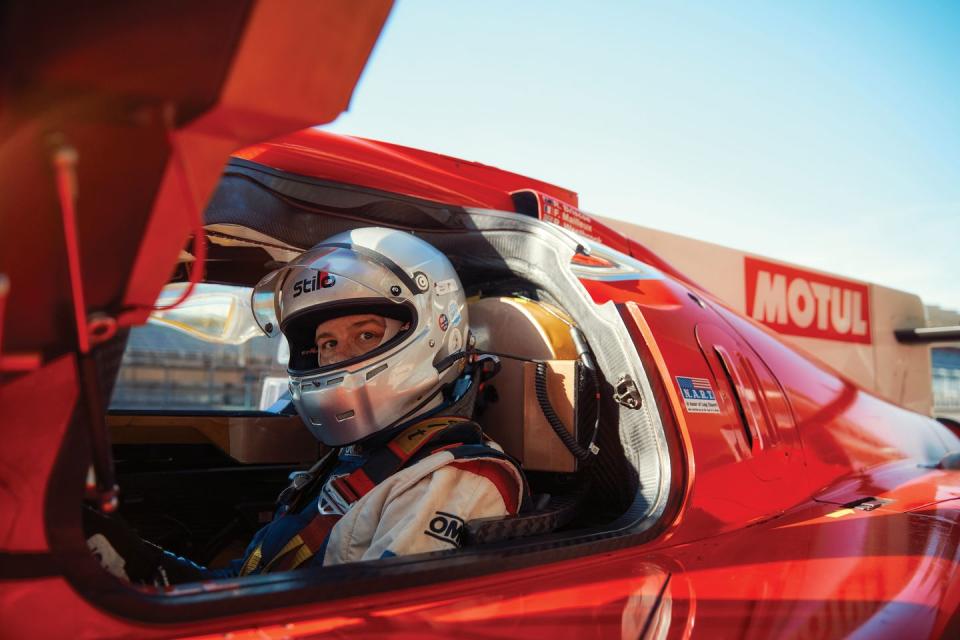
I couldn’t believe any of this would happen, that Circuit of the Americas (COTA) would let us onto an empty track, or that our insurance would approve a request involving a $6 million car. When I got off the plane in Austin, Texas, the day before, I figured I’d eat some breakfast tacos and go home, that the plan would inevitably have fallen apart. But the car was right there, alone in a garage at daybreak. It was all ours for a few hours.
I was a mess.
The 007 was built and designed by Podium Advanced Technologies, an Italian outfit that has partnered with Glickenhaus on everything from road cars to the Baja-dominating Boot buggy. Pipo Moteurs, a French firm known for rally engines, constructed the 007’s twin-turbocharged 3.5-liter V-8. That’s linked to a seven-speed Xtrac sequential gearbox. The 007 wears Penske dampers and Michelin slicks. Sauber honed the car’s aero. Yes, that Sauber.
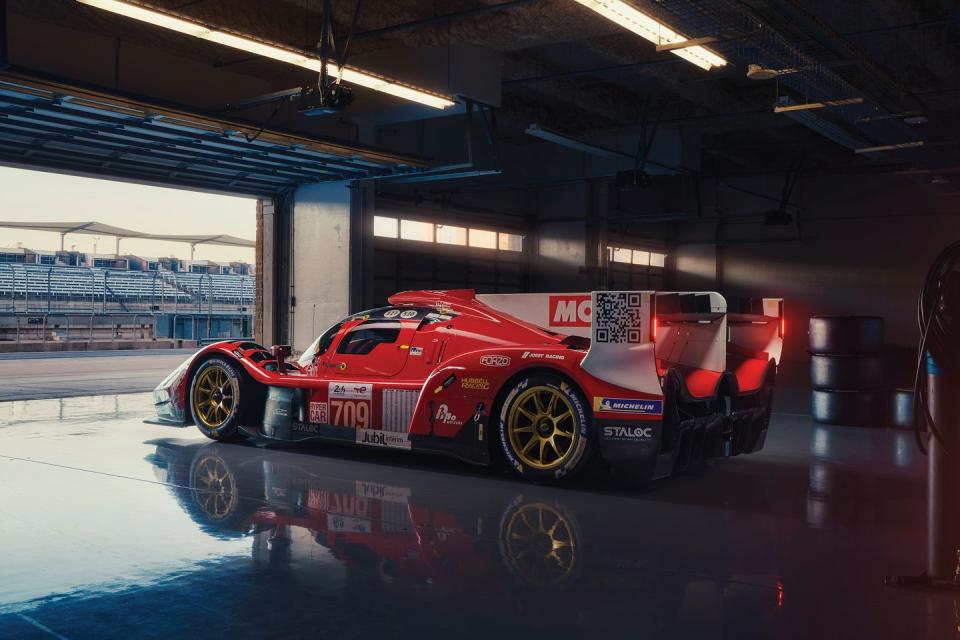
Close up, the 007 LMH is less spaceship than other Hypercar-class racers and more ’roid-rage Radical. The aero is clean in appearance, absent the grotesque and functional accents adorning most modern prototypes. Still, the 007’s proportions appear impossible: low and wide, with huge lights and a tiny cockpit, the sort of thing you doodle in middle-school math class. I walked around the car in silence.
The calm breaks when the affable Aussie Ryan Briscoe hops in for installation laps and a V-8 bark assaults everyone in the garage. Briscoe is a former Formula 1 test driver, an IndyCar race winner, and one of the drivers who put this car on the Le Mans podium last year.
COTA is 3.4 miles long with 20 turns, one of America’s most challenging tracks. Standing in pit lane in the cool morning air, I hear Briscoe hustling through every corner, the roaring V-8 and the stuttering sound of the traction control ricocheting off grandstands. The first time Briscoe shoots down the front straight, I start shaking. This is next level. The sound, the speed, the seriousness, the intimidation; the fly-bys stoke doubts in me about my ability to drive the car. It looks so damn fast. I’ve been racing since I was 12 and have driven a number of high-profile race cars, but none like this.
Briscoe returns to the garage, the 007’s engine chattering off the pit limiter. He made it all look so easy. It’s not.
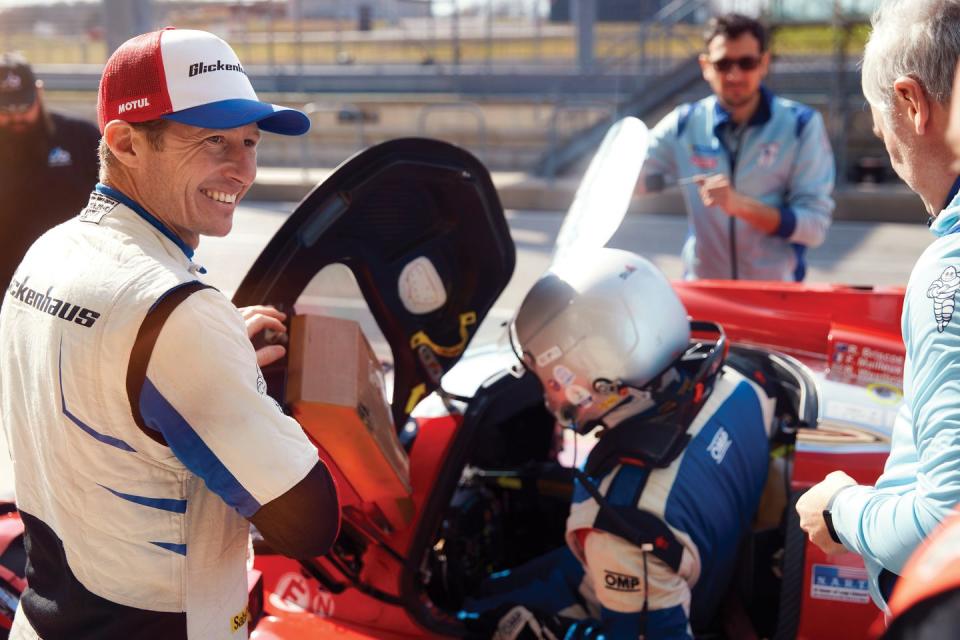
Wedging into the 007 LMH requires Kama Sutra–caliber contortions. I’m six feet tall with more of a dad bod than I’d like to admit, so the team removes Briscoe’s seat insert and surrounds me with foam. I fit—barely—by essentially lying on the floor. Closing the door requires hunkering down, with carbon-fiber crash structures pressing on my shoulders, holding me steady.
The cockpit isn’t loaded with superfluous screens and doesn’t require an advanced degree to understand. “It’s all pretty straightforward,” Briscoe says. “It’s a button. It’s labeled, and that’s what it does.”
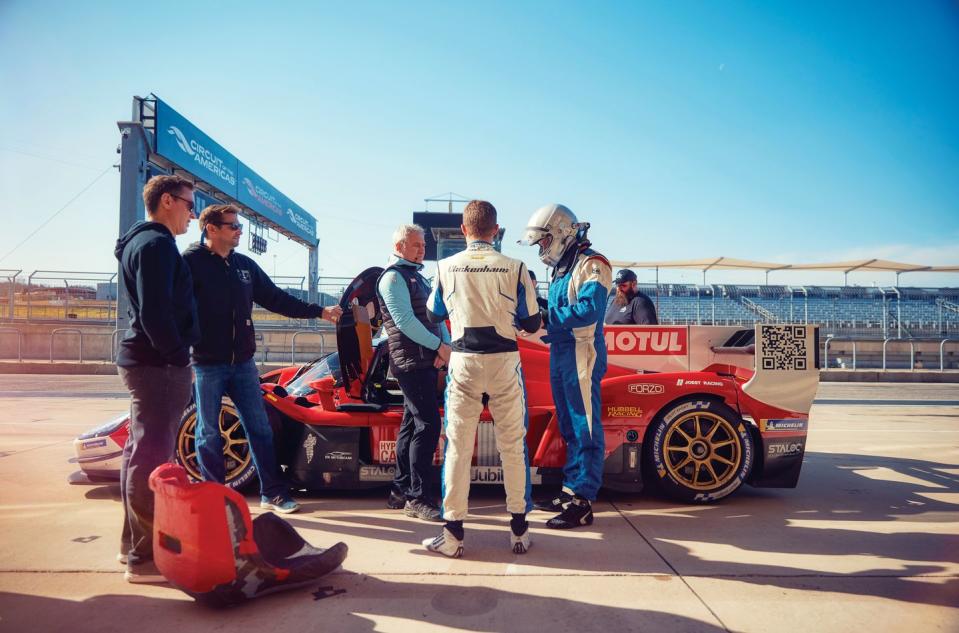
I press the “start” button, and the 007’s engine fires. So far, so good.
Over the roar, Briscoe leans in to give me a warning. Since this isn’t a hybrid like virtually all other Le Mans Hypercars, the 007 can’t do a silent electric launch. It needs the clutch, operated by two small paddles on the bottom of the steering wheel, to get moving. Briscoe is clear: There is no feedback, no signal you’ve hit the engagement point. You cannot lift off the throttle as the car starts moving. The clutch paddle needs to be released slowly over about four seconds. I stall repeatedly. Anyone would. Even pros have trouble.
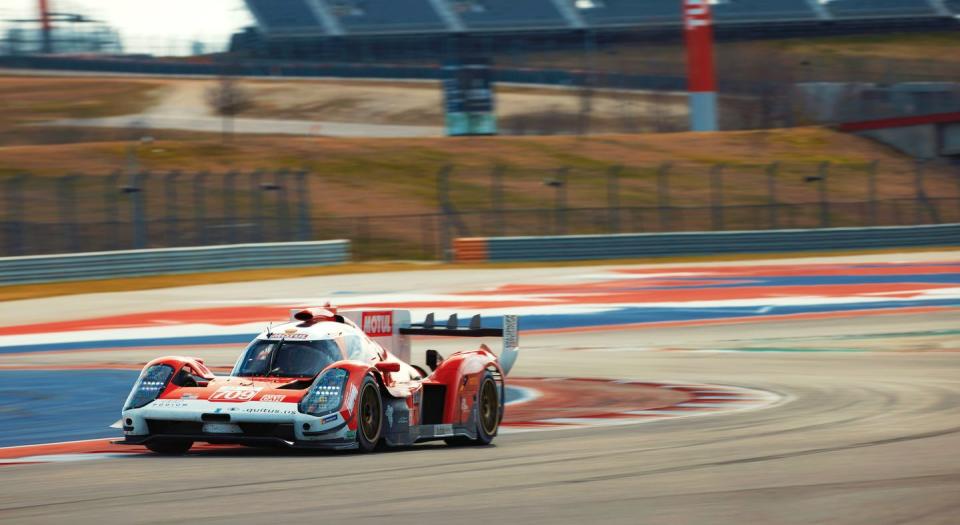
Another reminder that this is not a normal car: The wraparound windscreen distorts forward vision, fun-house-mirror style. Depending on where you look, it’ll magnify the location of an apex or make curbs look distant. Buttons and dials I don’t dare touch litter the steering wheel. I had lapped COTA in the photo van to learn the track, and it seemed straightforward. The 007’s ground-level seating position changes everything. I am lost.

I run the first few laps on tiptoe. The car is obstinate, and I feel like I might lose control in some high-speed corners. I lock the left front tire going into the fast, off-camber Turn 19 and run wide on my second lap. It sounds counterintuitive, but I wasn’t going fast enough. The tires and brakes stayed cold at low speeds, and the wings weren’t moving through the air fast enough to provide meaningful downforce. In a car with this much aero, there’s a gray area where you exceed mechanical grip while the aero grip is yet to fully take hold. Call it the crash zone. There are two choices: Go slow or go dramatically faster and pray that air will glue the car to the track. I choose prayer, but not in silence.
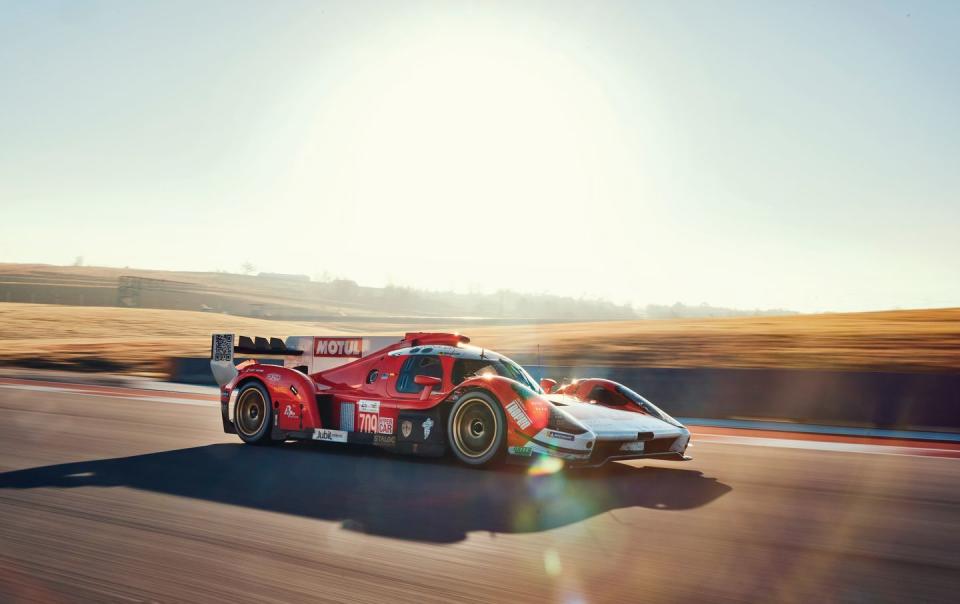
Nothing about the 007 is quiet. It’s always shouting. It has 671 hp, the limit for the class, and weighs at least 2270 pounds. On paper, those figures don’t look all that impressive for a race car. They are essentially meaningless. That first time at full throttle throws my brain for a loop. The narrow windshield tunnels forward vision as speed increases. I’ve never been in a car that goes through gears like this—every shift feels like a punch to the back of the head. Anti-lag allows the car to scamper out of corners like an animal with its tail on fire. Upshifts fly by until I touch 170 mph on COTA’s back straight in sixth. There is still another gear to use. Then there’s the traction control, which works overtime on bigger bumps. There’s a sizable one on the downhill run from the slow, sharp Turn 1 to the very, very fast 2, making the car jump right at the shift point from second to third. Without traction control, I would’ve beached the 007 backward in the gravel trap. With traction control, I could stay flat, a tiny interruption in power keeping everything in line.
That confidence works together with telepathic front-end feedback and steering. Not too light, not crazy heavy, and delightfully accurate. I had figured the curbs would be my nemesis at COTA and that I would need to keep the platform level for it to be at its best. Not the case, to a point. The suspension soaks up lower curbs, which even help turn the car. But jumping the 007 over a tall curb would not end well. This is evident in the high-speed esses, a series of corners from Turns 2 through 9, where a dose of curbing induces just enough rotation but an overdose would surely send the car pirouetting. It’s all about balance. The rear end can also feel nervous, particularly in bumpier high-speed corners. The few times I’m brave enough to take the fast kink at Turn 10 flat, I feel like the car is floating. Briscoe acknowledges there’s room for development.
“I think we can make the car handle better in high-speed corners,” he says. “We can try to lock the rear down a bit more. We’ve typically had a bit more of an understeering car in slow corners and then an oversteering one in high-speed corners. If we could connect those two, I think we could get a bit more cornering performance.”
The brakes are wild, with initial bite comparable to driving straight into a brick wall. I thought I was pushing a few braking zones only to be almost stopped before the corner even reveals itself. That encouraged trust and, therefore, more aggressive runs into COTA’s fastest turns.
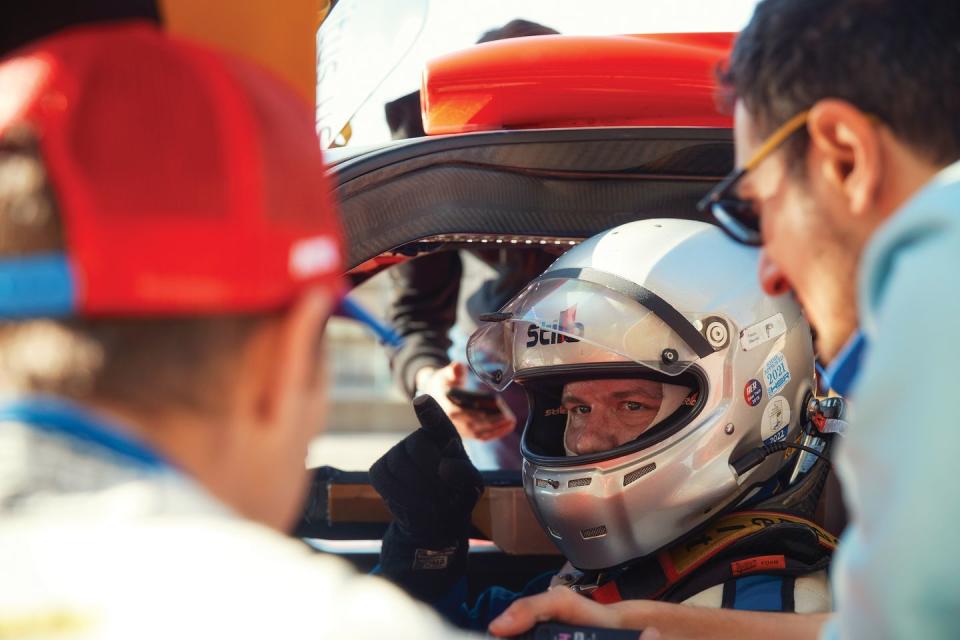
After a few laps, the car’s narrow field of vision, quick steering, acceleration, sheer grip, and braking force feel natural. The brain is a magical thing, able to adjust to something alien in minutes. But mine couldn’t acclimate to the car’s aero. I knew trusting downforce would result in a huge leap in speed through the esses, shaving seconds off my lap. But knowing that and acting on it are two different things. Pro drivers have an innate understanding of how a platform like this will behave when it’s time to lean on the wings. Amateurs like me might know that downforce exists at higher speeds but have created a mental barrier that says “This is the limit,” even if the car is more capable.
That’s because aero is mysterious. You can intuit mechanical grip on your way to the grocery store, whereas downforce is produced and impacted by what you can’t see, like the wind. It was helpful when there was a headwind, but a tailwind would force the car wide, extend braking distances, and even reduce grip midcorner. On the back straight, gusty crosswinds make the 007 feel like an offshore powerboat fighting through chop. The wind is an asset at one place on the track: the Turn 16 complex. A fast quad-apex right-hander with plenty of runoff and a strong headwind makes it a safe place to experiment.
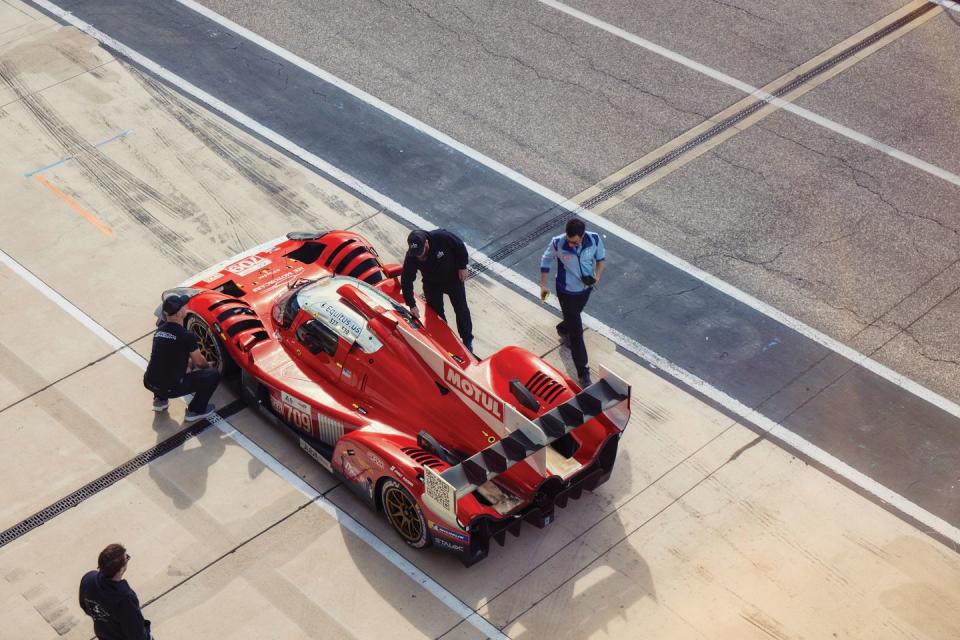
Each lap, I venture a little quicker through 16, first in third gear, then near the top of third, then finally in fourth. Faster speeds make the car more stable and trustworthy and far less fitful. The deeper I got into the aero, the better the 007 was to drive, going from edgy to flowing and beautiful, a single steering input guiding it through the entire turn. In those moments, pulling sustained g’s, I understand how one can drive this car for hours at Le Mans. It didn’t beat me up. It was not scary. It was even predictable. I decide it’s time to pit, but I dream about another session, about really attacking the esses and fully trusting the aero, taking that risk.
I park the car and can’t really think or put together a cogent sentence. I barely remember clambering out. Briscoe offers to show me data, and the team asks if I want another session. I decline both. I’ve already spent more time in a current Le Mans Hypercar than anyone who isn’t a pro driver. Plus, nothing went wrong. I’m fortunate even to be in the same zip code as a 007, so I decide not to push my luck.
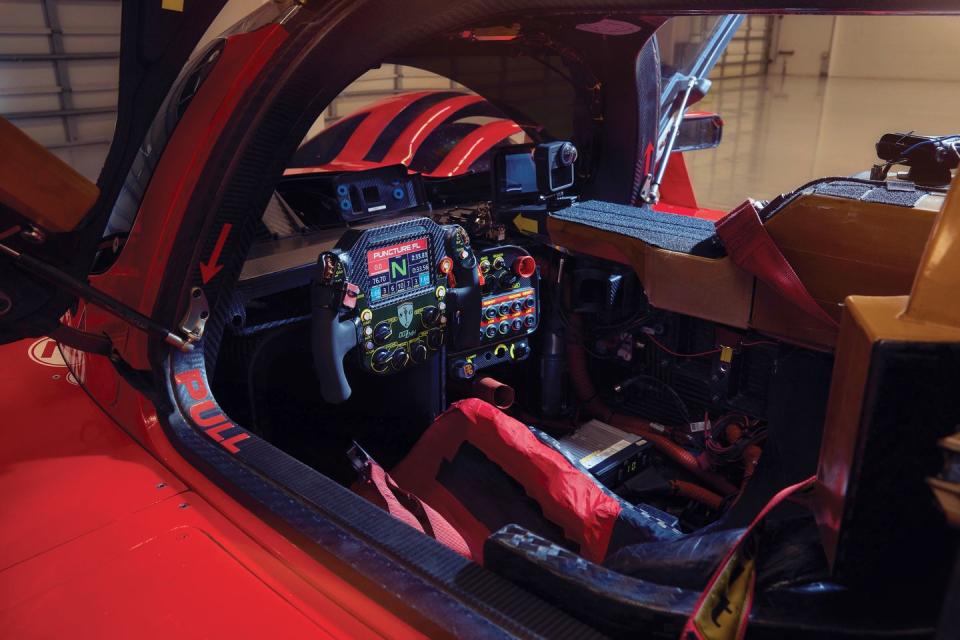
“Our car is a modern Lola T70,” Jim Glickenhaus tells me a few days later, once I arrive back on earth. The T70, of course, is one of the old-school icons of prototype racing: all swoops and horsepower, with little in the way of tech. The 007 doesn’t have the ornery hybrid components that have been prone to failure. It doesn’t need to compensate for a powered front axle’s added weight and complexity. It’s reliable and easy to fix. It isn’t a science project. It’s pure race car.
Le Mans has a long history of underdogs doing improbable things. For every Porsche or Audi win, there are dozens of competitors like Glickenhaus that create their own fairy tale.
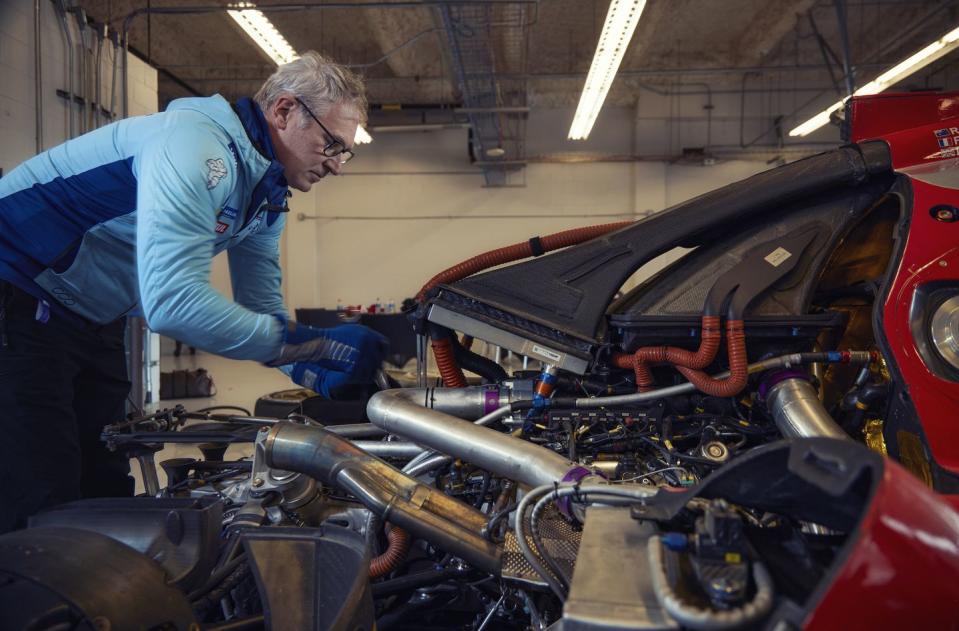
“To be at Le Mans and to see two cars go by that have your name on them, it’s very emotional,” Jim says, reflecting on his entries at la Sarthe in 2021. The podium finish was something else. “It was a win to finish third. Anyone who thinks that it’s a joke that we could win the 24 Hours of Le Mans is wrong. It’s possible.” Competitors are only becoming more complex, so there’s something appealing about a back-to-basics car that will be fast for 24 hours straight with little risk of experimental components failing. It’s a strategy that can win.
On my cool-down lap, I thought about the effort. I imagined driving the 007 at la Sarthe and how it would handle the Porsche Curves and Indianapolis, how it would transition into the chicanes on the Mulsanne, and how it would feel crossing under the Dunlop Bridge on that first lap with hundreds of thousands of people watching. I imagined how it would feel to stand on the podium and have a nation cheer for you. Building a car for Le Mans’s top class is an outrageous commitment of resources, especially now. That a scrappy, determined group based in Connecticut can build a car as gorgeous as this and finish the world’s greatest endurance race on the podium shows racing isn’t just unlimited funds and impossible tech. The 007 proves that dreamers still have a place at Le Mans.

You Might Also Like

